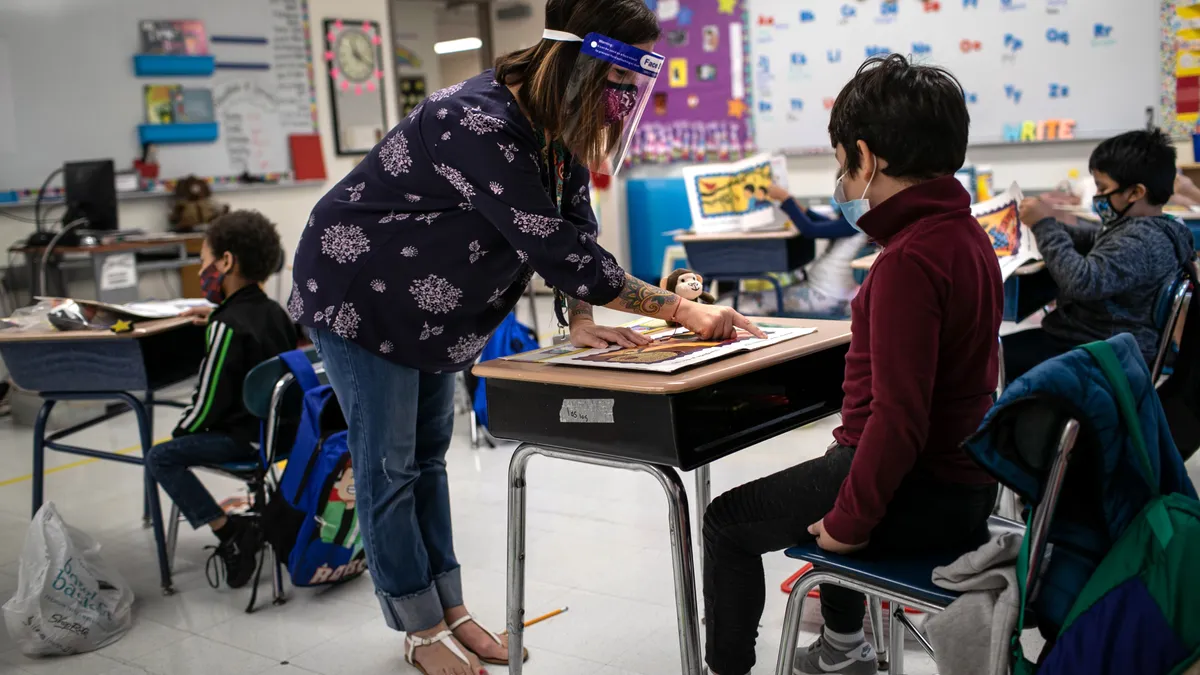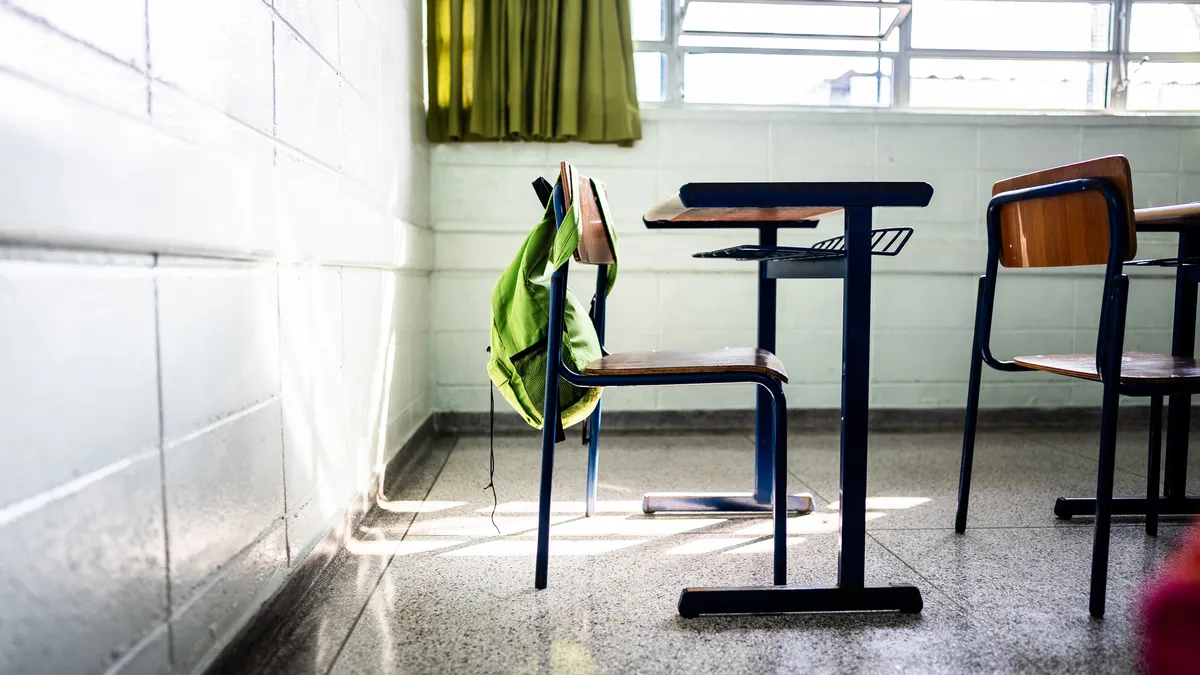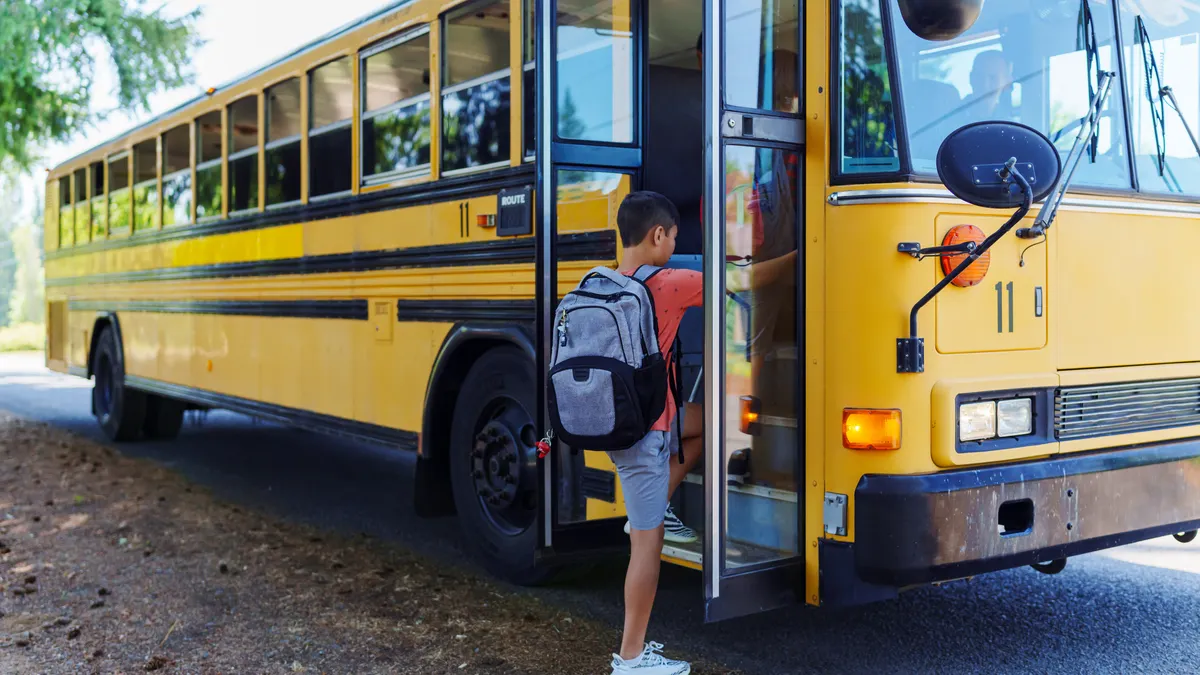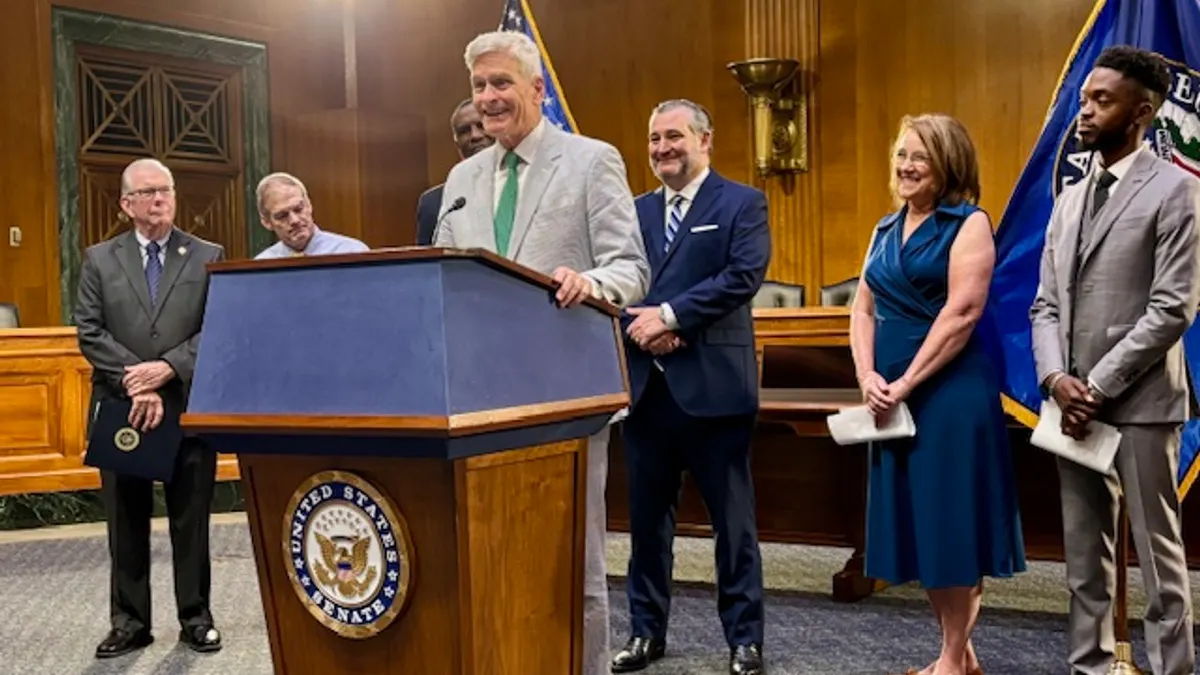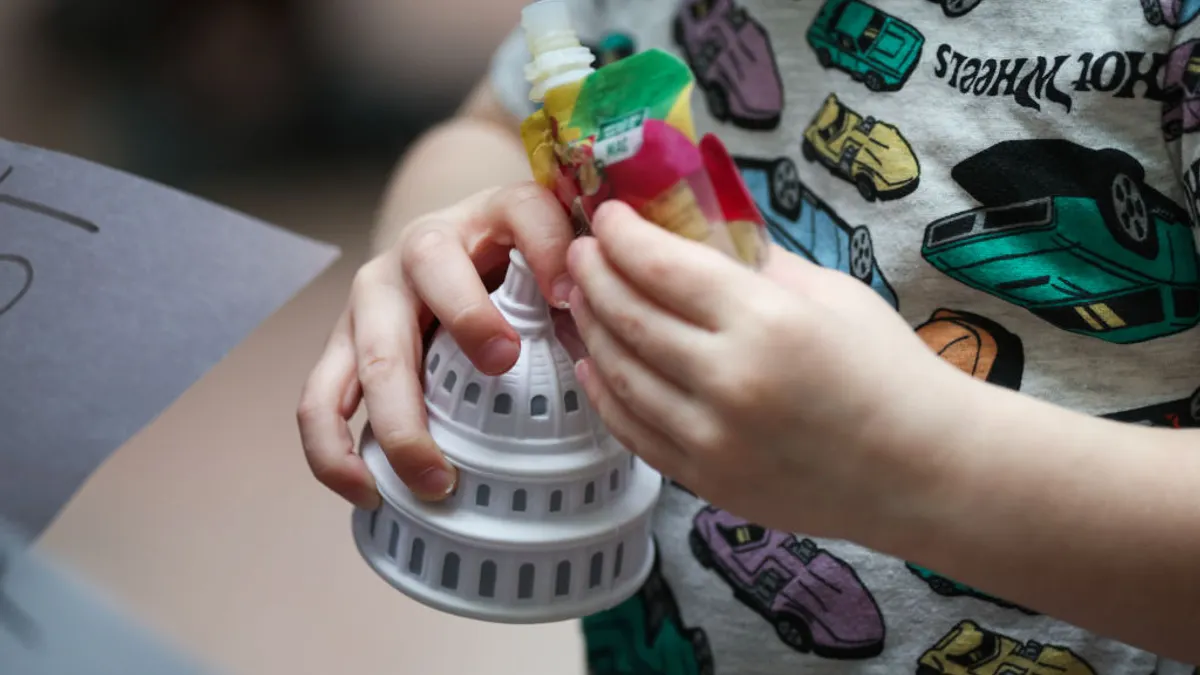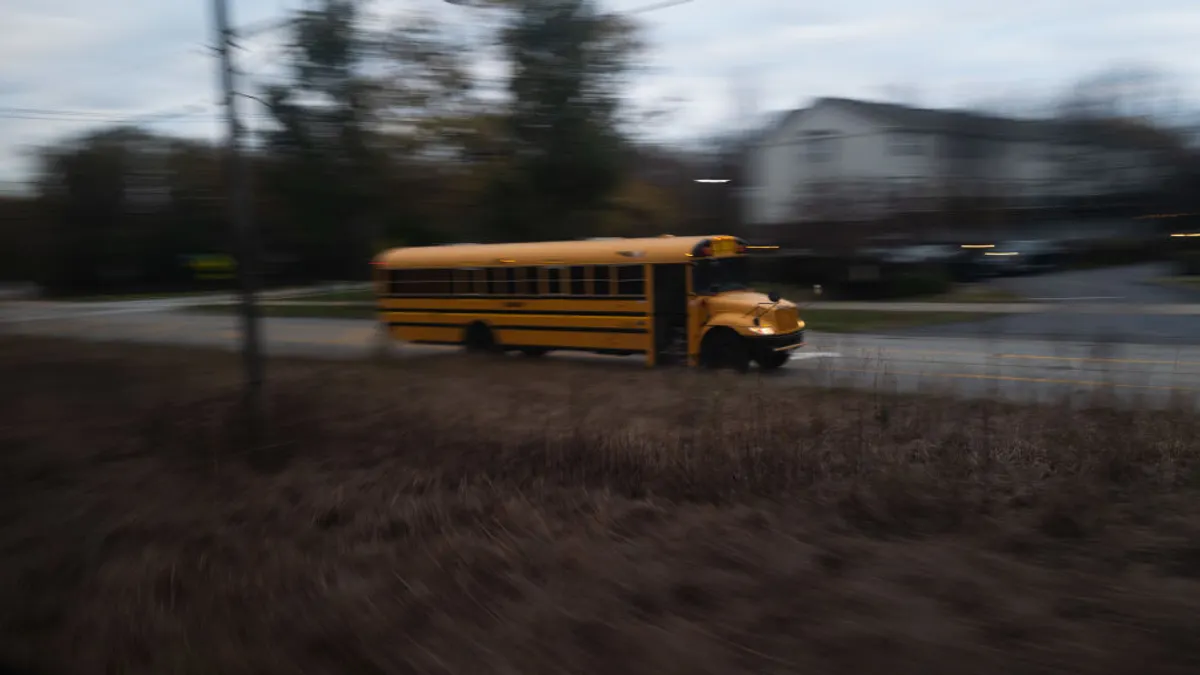"Stark inequalities" persist in pre-K-12 education, with Black and Latino students having less access to STEM courses, and Black students and students with disabilities being overrepresented in discipline practices.
These are just two of the findings in national data from the 2020-21 school year released Wednesday from the U.S. Education Department's Civil Rights Data Collection, which is a mandatory survey of public schools conducted by the Office for Civil Rights. It is the first CRDC information release since the COVID-19 pandemic severely impacted pre-K-12 schooling. The most recent previous data collection came from the 2017-18 school year.
In a press call Wednesday, U.S. Education Secretary Miguel Cardona highlighted "unacceptable" disparities in access to math courses — particularly that calculus is offered in only 35% of schools with high enrollments of Black and Latino students, or where more than 75% of students are Black or Latino. That compares to calculus being offered at 54% of schools with low enrollments or less than 25% Black and Latino students.
"We spent years fighting COVID, but now we must fight complacency."

Miguel Cardona
U.S. education secretary
Cardona also pointed to "serious inequities" in discipline rates. For instance, pre-K students served under the Individuals with Disabilities Education Act represented 24% of preschool enrollment — but 34% of preschool children with one or more out-of-school suspensions and 62% of preschool children who had been expelled.
"We spent years fighting COVID, but now we must fight complacency," Cardona said.
Likewise, Catherine Lhamon, assistant secretary for civil rights, said the findings "cry out for us to act."
"And I hope every school community will assess these data with the same rigor that we at the Office for Civil Rights do, and act to ensure full civil rights satisfaction for every student," Lhamon said.
The 2020-21 data contains information collected from 17,821 school districts and over 97,575 schools. The comprehensive datasets include information about student enrollment, access to courses, discipline practices, internet access, teacher certification, school climate factors, and school offenses, such as threats, physical attacks, robberies and sexual assaults.
The data is available at the school, district, state and national levels.
Education Department leaders cautioned against comparing the new data with previous years' datasets. When the information was collected during the 2020-21 school year, 88% of schools reported hybrid instruction — both in-person and online — at some point.
It was an "anomalous year in which schools grappled with a once-in-a-century pandemic that caused schools to adjust the way they provided students instruction," Lhamon said.
Even so, OCR reported that for the first time 100% of required data submitters sent and certified data. The Education Department plans to release additional data reports and snapshots on topics such as student access to courses and programs and data specific to English learners and students with disabilities.
OCR typically collects data for the CRDC biennially but paused collection during the pandemic. The next data collection is for this current school year.
Here's a closer look at some of the data collected.
Enrollment
Pre-K-12 enrollment dipped slightly between the 2017-18 and the 2020-21 school years, from 59.9 million students to 49.2 million.
The share of White students shrank slightly, from 46% in 2020-21 to 47.3% in 2017-18.
Pre-K-12 public school enrollment dipped slightly from 2017-18 to 2020-21
In 2020-21, 28% of students identified as Hispanic or Latino, compared to 27.2% in 2017-18 and 15% as Black or African American, compared to 15.1% in 2017-18.
For 2020-21, students with disabilities, including those with individualized education programs and those served under Section 504, made up 17% of all student enrollment. English learners were 11% of all students enrolled.
Discipline
Both White and Black boys were overrepresented in discipline outcomes, with Black boys being nearly two times more likely than White boys to get an out-of-school suspension or be expelled from public school. Black girls were nearly two times more likely to receive one or more in-school suspensions, one or more out-of-school suspensions, and expulsions than White girls.
Public school students who received one or more out-of-school suspensions missed a total of more than 2 million school days.
Students with disabilities have higher rates of suspensions, expulsions
Students with disabilities were also overrepresented in discipline situations. While students with disabilities made up 17% of K-12 student enrollment, 24% had one or more in-school suspensions, 29% got one or more out-of-school suspensions, and 21% faced expulsion.
About 19,400 K-12 students received corporal punishment, and about 52,800 students were physically restrained, mechanically restrained, and/or placed in seclusion at school. About 29,100 public school students reported being harassed or bullied on the basis of sex, race or disability.
During the 2020-21 school year, 14% of referrals to law enforcement resulted in a school-related arrest.
School safety
Some 274,700 "offenses" were reported in school buildings or during school-sponsored events during the 2020-21 school year. A majority of those incidents (93%) involved physical attacks without a weapon and threats of physical attack without a weapon.
Educators reported 1,900 incidents of possession of a firearm or explosive device on school campuses, but less than 1% — or 180 schools — reported at least one incident involving a school-related shooting. Less than 1%, or about 100, schools, reported a homicide of a student, faculty member or staff member.
Public schools reported 3,050 incidents of rape, attempted rape and sexual assault. And schools logged 42,500 allegations of harassment or bullying on the basis of sex, sexual orientation, race, disability or religion.
Academics
Of the nation's 26,200 high schools, only 75% offered chemistry, 67% offered advanced mathematics, 61% offered physics, 49% offered computer science, and 48% offered calculus.
The data shows disparities in Black students' participation in Advanced Placement classes. Although Black students represented 15% of total high school student enrollment, they accounted for just 10% of students enrolled in AP computer science, 8% of students enrolled in AP science, and 6% of students enrolled in AP mathematics.
"STEM education prepares students for the careers of tomorrow, yet students of color still lack equitable access," Cardona said.
The national student-teacher ratio is 15:1. California posted the highest ratio at 21:1, and Vermont the lowest at 10:1.
Teaching and support staff
Only 1% of students attended a school where fewer than half of teachers met all state certification requirements. A majority of students attending those schools — 66% — were Black and Latino.
About 96% of the nation's 16 million high school students had access to at least one school counselor, while nearly 1.7 million students attended a public school with a sworn law enforcement officer or security guard and no school counselor.
Technology
About 95% of schools reported having Wi-Fi access in every classroom, and 93% of schools said their internet connection came through a fiber-optic connection.
But access to internet connections varied across states. At the high end, Kentucky, Maryland, North Carolina, Virginia and West Virginia all said 99% or more of their schools had connectivity. The lowest rates came in Alaska at 52% and Florida at 66%.
Some 91,700 schools provided a total of about 47 million Wi-Fi enabled devices, and most schools (87%) allowed students to take those devices home.



